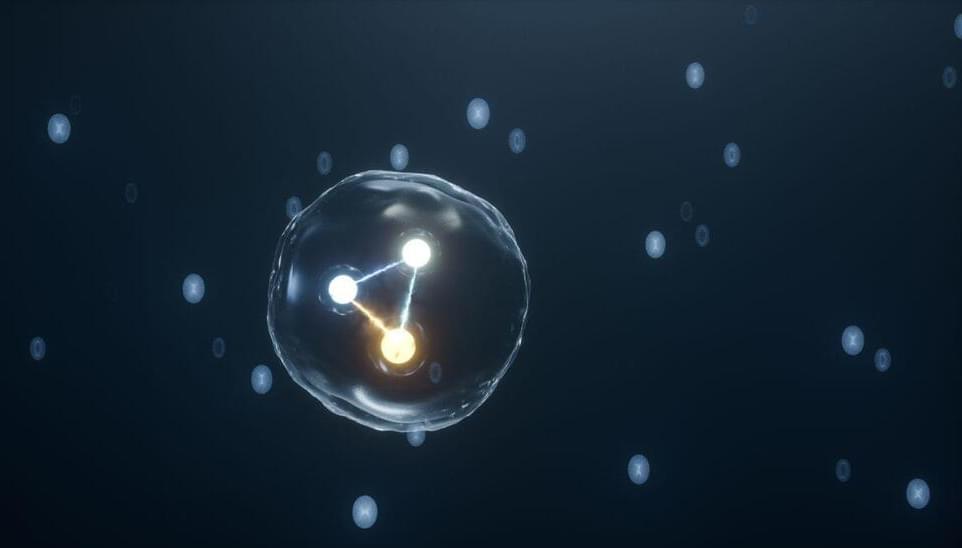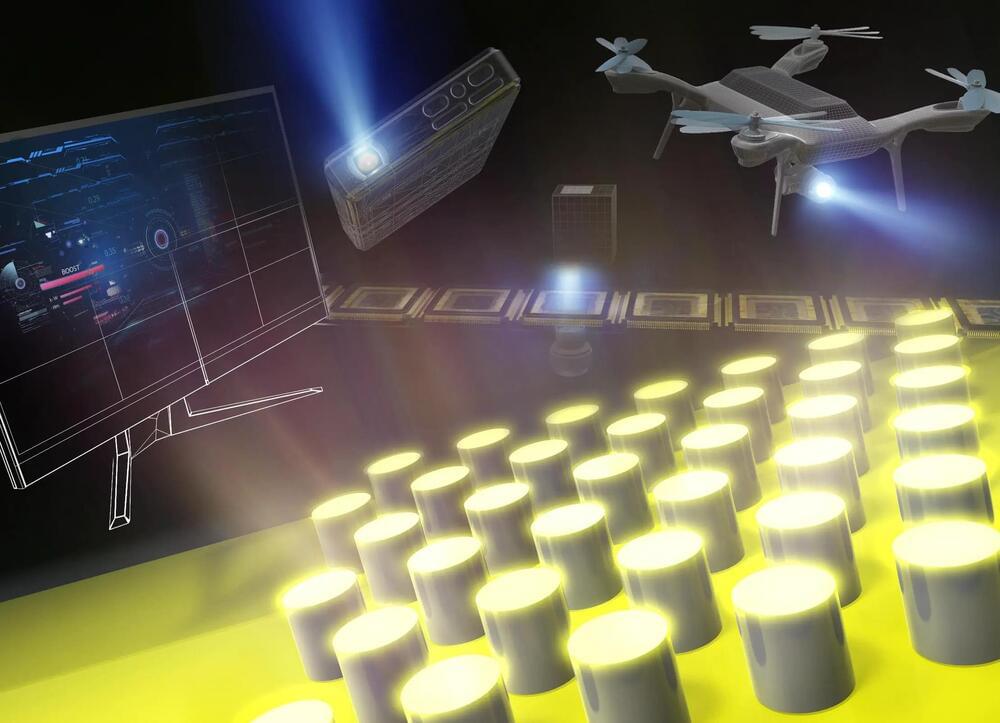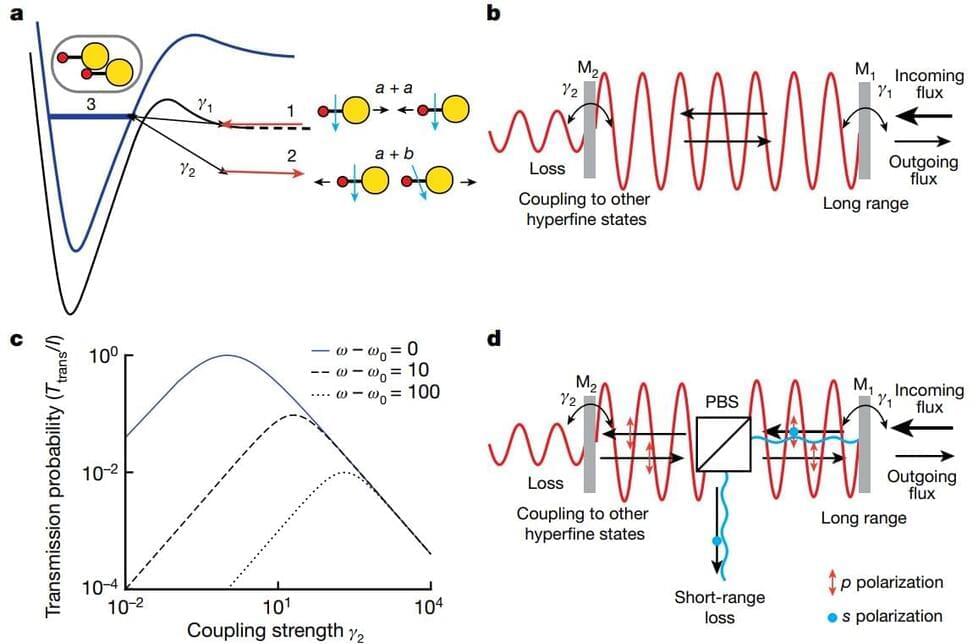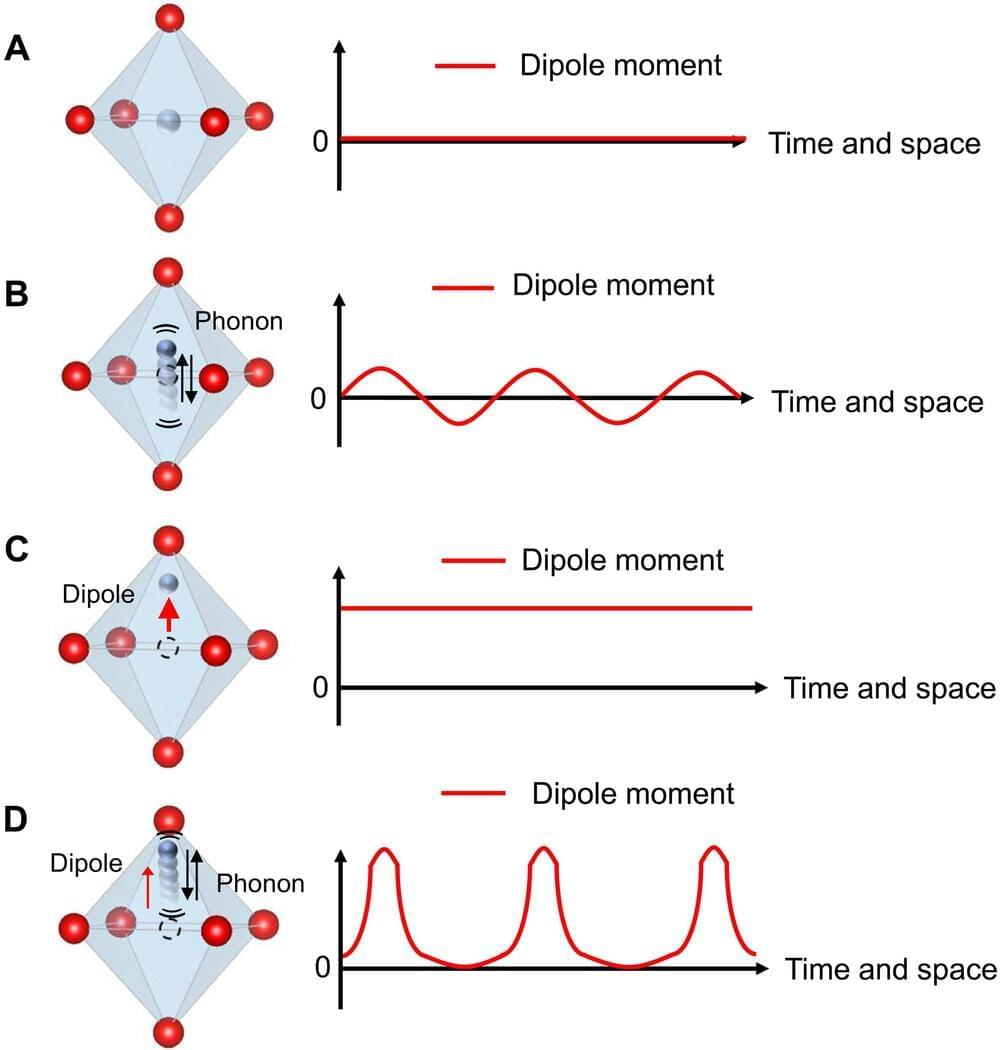The strong force holds our atoms together. Scientists may have observed its small-scale fluctuations for the first time.


Sponsor: AG1, The nutritional drink I’m taking for energy and mental focus. Tap this link to get a year’s supply of immune-supporting vitamin D3-K2 & 5 travel packs FREE with your first order: https://www.athleticgreens.com/arvinash.
Science Asylum video on Schrodinger Equation:
JOIN our PATREON (Members help pay for the animations. THANK YOU so much!):
https://www.patreon.com/arvinash.
RECOMMENDED READING:
Schwartz, “Quantum Field Theory and the Standard model” https://amzn.to/3HmWdYt.
CHAPTERS:
0:00 The most important motion in the universe.
1:08 How get energy and mental focus.
2:20 A spring: Classical simple harmonic oscillator.
4:48 QUANTUM Harmonic oscillator.
6:00 Science Asylum — what is the Schrodinger equation?
7:30 Quantum Field Theory (QFT) uses spring math!
10:00 Intuitive description of what’s going on!
12:37 What is really oscillating in QFT?
SUMMARY:

Only by knowing the average number of friends each person has, scientists at Complexity Science Hub (CSH) were able to predict the group sizes of people in a computer game. For this purpose, they modeled the formation of social groups on an example from physics, namely the self-organization of particles with spin.
Sociologists have focused on how social groups are forming and the mechanism behind it for a long time. The urge to avoid stress, as well as homophily—the tendency of people to join groups with others who share similar features, traits, or opinions—have been observed in many different contexts.
“Although multiple models have been studied, little is known about how homophily and stress avoidance affect the formation of human groups, and in particular the size distribution of them—whether there are many small groups or few large ones, for example,” explains Jan Korbel from CSH and first author of the study. By using two contemporary fields from physics, called self-assembly and spin glasses, scientists now shed new light on social group formation.

Researchers have theorized a new mechanism to generate high-energy “quantum light,” which could be used to investigate new properties of matter at the atomic scale.
The researchers, from the University of Cambridge, along with colleagues from the U.S., Israel and Austria, developed a theory describing a new state of light, which has controllable quantum properties over a broad range of frequencies, up as high as X-ray frequencies. Their results are reported in the journal Nature Physics.
The world we observe around us can be described according to the laws of classical physics, but once we observe things at an atomic scale, the strange world of quantum physics takes over. Imagine a basketball: observing it with the naked eye, the basketball behaves according to the laws of classical physics. But the atoms that make up the basketball behave according to quantum physics instead.



White LEDs’ reign as the top light source may soon come to an end with the advent of a new alternative that offers superior directionality.
A photonic crystal or nanoantenna, a 2D structure with periodic arrangement of nano-sized particles, is being developed as a cutting-edge optical control technology. Upon exposure to light, combining a nanoantenna with a phosphor plate produces a harmonious mix of blue and yellow light.
White LEDs have already been improved upon in the form of white laser diodes, or LDs, which consist of yellow phosphors and blue LDs. While the blue LDs are highly directional, the yellow phosphors radiate in all directions, resulting in an undesired mixing of colors.

When waves damp or amplify on resonant particles in a plasma, nonresonant particles experience a recoil force that conserves the total momentum between particles and electromagnetic fields. This force is important to understand, as it can completely negate current drive and rotation drive mechanisms that are predicted on the basis of only resonant particles. Here, the existing electrostatic theory of this recoil force is extended to electromagnetic waves. While the result bears close similarity to historical fluid theories of laser–plasma interactions, it now incorporates both resonant and nonresonant particles, allowing momentum conservation to be self-consistently proven. Furthermore, the result is shown to be generally valid for kinetic plasmas, which is verified through single-particle hot-plasma simulations. The new form of the force provides physical insight into the nature of the generalized Minkowski (plasmon) momentum of geometrical optics, which is shown to correspond to the momentum gained by the field and nonresonant particles as the wave is self-consistently ramped up from vanishing amplitude.

If she hits just the right pitch, a singer can shatter a wine glass. The reason is resonance. While the glass may vibrate slightly in response to most acoustic tones, a pitch that resonates with the material’s own natural frequency can send its vibrations into overdrive, causing the glass to shatter.
Resonance also occurs at the much smaller scale of atoms and molecules. When particles chemically react, it’s partly due to specific conditions that resonate with particles in a way that drives them to chemically link. But atoms and molecules are constantly in motion, inhabiting a blur of vibrating and rotating states. Picking out the exact resonating state that ultimately triggers molecules to react has been nearly impossible.
MIT physicists may have cracked part of this mystery with a new study appearing in the journal Nature. The team reports that they have for the first time observed a resonance in colliding ultracold molecules.

Scientists have found the secret behind a property of solid materials known as ferroelectrics, showing that quasiparticles moving in wave-like patterns among vibrating atoms carry enough heat to turn the material into a thermal switch when an electrical field is applied externally.
A key finding of the study is that this control of thermal conductivity is attributable to the structure of the material rather than any random collisions among atoms. Specifically, the researchers describe quasiparticles called ferrons whose polarization changes as they “wiggle” in between vibrating atoms—and it’s that ordered wiggling and polarization, receptive to the externally applied electrical field, that dictates the material’s ability to transfer the heat at a different rate.
“We figured out that this change in position of these atoms, and the change of the nature of the vibrations, must carry heat, and therefore the external field which changes this vibration must affect the thermal conductivity,” said senior author Joseph Heremans, professor of mechanical and aerospace engineering, materials science and engineering, and physics at The Ohio State University.